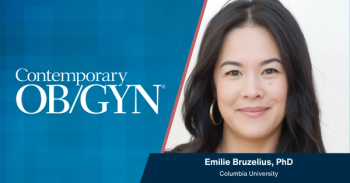
Our Generation: Bridging the generation gap
A 2004 survey of physicians aged 50 to 65 showed that 64% felt physicians being trained today are not as hard working as those with whom they trained.
"How do you do this job? What you do is so gross, but my dad says I should be an ob/gyn because you make a lot of money."
How do you respond tactfully to a question like that from an adolescent patient? A few things ran through my mind as I listened to her. First, what I do is not gross. Second, I had no sleep last night because I did deliveries for my partners for which I made no money. Third, I really hate it when someone says, "doctors make a lot of money."
Seizing the "teaching" moment, I asked this young woman-who could be a future member of my partner pool-a few questions. Do you know how many years of school it takes to become a doctor? Do you know how much all of those years of education cost? Do you know what an ob/gyn does? She didn't know the answers, so I described our profession to her. Her response? "Wow! You do all of that? When do you sleep? I hope you make at least $500,000. If you don't, you are crazy." I had gone from doing something "gross" to being "crazy," but that was real progress with this adolescent.
According to Breda Bova, PhD, Associate Dean in the College of Education at the University of New Mexico, there are four distinct generations in the workforce today: the "silent" generation (born from 1925 to 1942); "baby boomers" (1943 to 1961); Generation X (1962 to1981); and Generation Y (1982 to 1998). Dr. Bova's extensive research underscores the differences between these groups in outlook, work ethic, and views of authority, leadership, relationships, and work/life balance. One of the key points she made in a presentation at the recent ACOG annual clinical meeting is that in medicine, the generations have varying practice styles.
A 2004 survey of physicians aged 50 to 65 by Merritt, Hawkins & Associates (MHA) showed that 64% felt physicians being trained today are not as hardworking as physicians with whom they trained.1 This is in keeping with Bova's research, which indicates that the "silent" generation believes in postponing gratification and paying your dues. In contrast, "baby boomers," says Bova, believe that "work ethic and worth ethic are synonymous." Generation Xers want balance and "approach careers with lateral moves, not ladder climbing, and have a 'want it now' mentality." Generation Yers have been using computers since pre-kindergarten and, Bova says, "value speed over detail, are in a state of continuous partial attention, and want options and flexibility."
Why does any of this matter? Because all of these generations are now being thrown together in the workplace. If we do not recognize our differences, we will not succeed as a medical team. Those of us who teach residents and medical students (or are raising children) know what I'm talking about. I've talked to medical students who do not want to work more than 80 hours per week and want flexibility. Many say they want careers that will allow them to work part-time. I see generational differences in my own practice. One of my partners is a "silent" generation member and gets to work every day at 6:30 AM. Two other partners are "baby boomers" and the other, like me, is a Generation Xer. And our approaches to practice and to family life are not the same.
Reflecting on his early years in practice, an older physician recently said to me, "I just went to work every day. I loved what I did." That kind of job satisfaction is enviable, but today it's simply not enough to be a great physician. You have to run a business, worry about medical liability, and stay current with technology. The demographics have also changed. There are more women ob/gyns, many of whom have husbands or partners who also work. And more male ob/gyns have wives or partners who work.
Newsletter
Get the latest clinical updates, case studies, and expert commentary in obstetric and gynecologic care. Sign up now to stay informed.
















